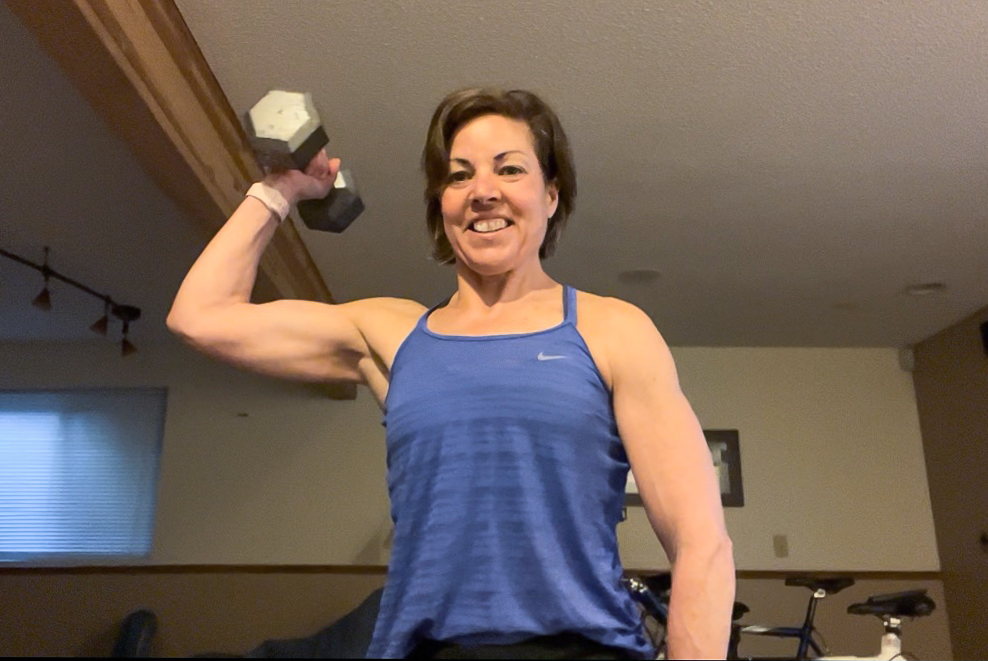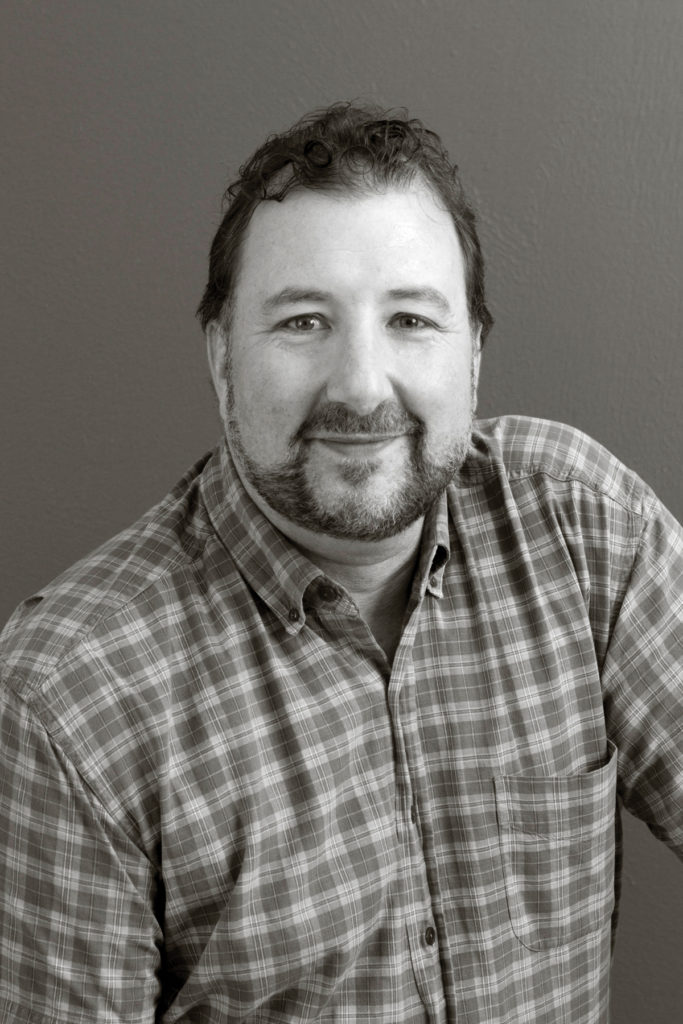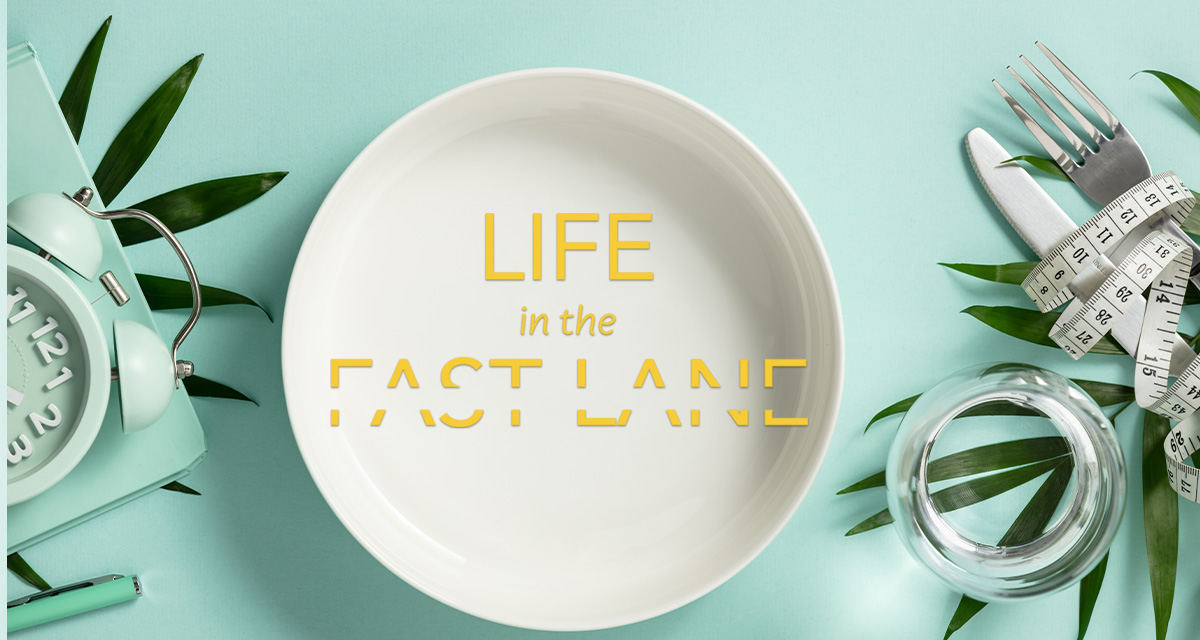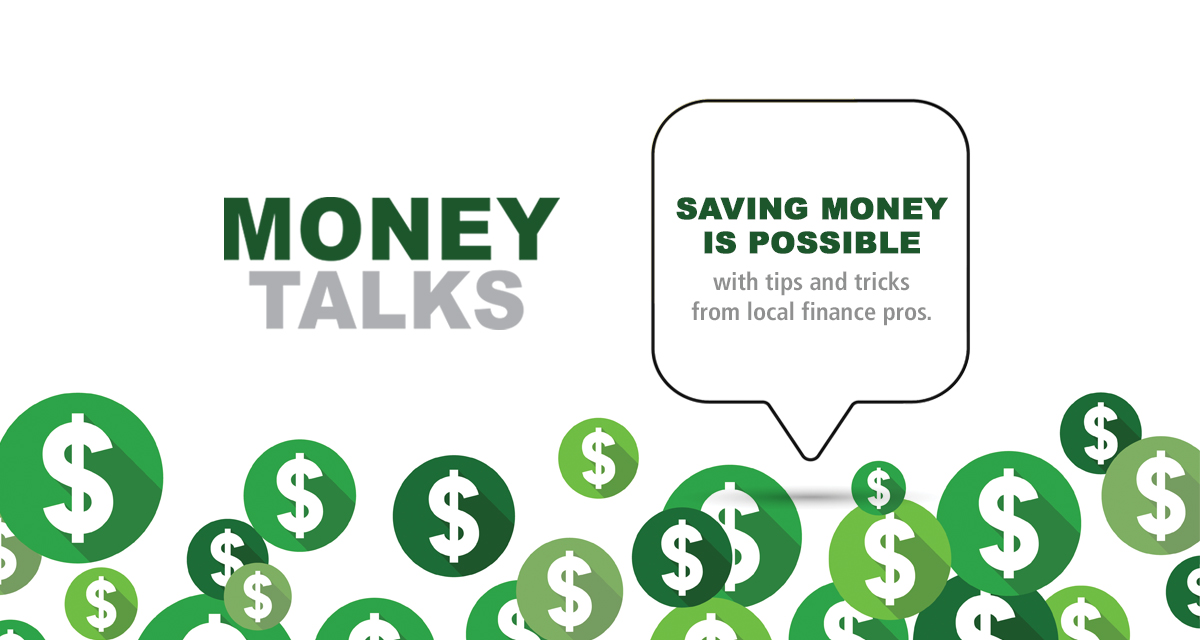By Jared Fiel –
Cindy Dallow and Lynne Parks have a lot in common. Their jobs are to keep people healthy. They keep very healthy themselves. They are friends and agree on most things—until you bring up intermittent fasting (IF).

Cindy Dallow
Basically, intermittent fasting involves eating during a certain time and not eating at other times. Parks practices it. Dallow does not. The most common form of IF is the 8/16 schedule. This means you eat during an eight-hour “feeding window” (usually two normal meals) and then don’t eat for 16 hours (drinking only water, black coffee or green tea). You can determine whatever timing works best for you.
How it works, as described by Parks, a Greeley registered nurse who has followed a fasting program for two years, is “to spend a good chunk of the day with lowered insulin levels. Every time we eat, insulin levels go up. This signals the body to move glucose into the cells and to store the rest as body fat. Only when insulin levels fall back down (and this takes a while) does it allow access to fat stores for energy that were previously unavailable due to the presence of insulin.”
Dallow, a registered dietician in Greeley who has her own practice called My Body My Life Food & Fitness, has some concerns with fasting, much of it based on the fact that most of the research that has been done has been on rats and mice.
“That raises a lot of red flags for me,” she says. “We have a lot of similarities, but there are big differences.”
She adds that many of her clients are busy people who need to maintain focus for long hours and may find the strict fasting schedule to be difficult to sustain.
“I’ve seen a lot of people fail in it,” she says.
Parks eats from 10 a.m. to 6 p.m. “Cavemen didn’t have 7Elevens,” she says. “Our bodies are not primed for constant eating.”
Dallow says the simple fact of skipping one meal “is no different than a regular diet.”

Lynne Parks
Advocates for fasting such as Parks argue that not only does this system help you lose weight, but it also has many other benefits, including:
• Anti-inflammatory properties
• Longevity and anti-aging benefits by reducing oxidative stress (a key driver for aging)
• Improves insulin sensitivity, which can delay or prevent diabetes in those who are pre-diabetic
• Improves cognitive function
• Improves gut health by allowing the gut to relax and not have to work all the time; longer fasts can reset the gut microbiome
• Activation of autophagy, which is the cellular process where the body removes old cells and replaces with healthier new cells
• Improves mitochondrial health
• Increases HGH (human growth hormone), which is responsible for cellular repair, fat burning and augmentation in metabolism
Parks adds that while much of the research is on animals in this arena that is because companies don’t want to fund human research: There is no money to be made off it. There is a lot of medical research out there, including an article in the “New England Journal of Medicine,” (tinyurl.com/36cyjxsw) which touts the benefits on health, aging and disease.
Another concern Dallow has is that much of the focus is about eating and not eating, but not much about exercise. “It’s not sexy to talk about exercise,” she says, “but the truth is that you get the same effect or more with exercise.”
She adds that research has also shown that humans need regular intake of protein to maintain our muscles, especially as we get older.
Parks (a 58-year-old, post-menopausal mother of two) submitted the photos with this story to show that she still exercises and is maintaining her muscles.
“I have never in my life eaten as much fat (healthy fats, mind you), exercised as little (ok, little for me as I exercise about 1 hour/day, 6 days/week, but a fraction of the lifting and running miles I did in the recent past), and been as lean and strong as I am today,” she says. “I have less cravings and am completely satisfied after I have eaten my healthy-sized meals in my 8-hour eating window. All this once I became fat adapted, which generally takes 2 to 4 weeks of clean fasting.”
In addition, she adds, “How do I know I am burning fat for fuel? I test my blood for both glucose and ketone levels, so I can see when I am in a therapeutic level of ketone production, a byproduct of fat metabolism. I am a nurse who works with data, so of course, I am going to make sure this process is working for me.”
Fasting isn’t really a new thing. As Parks notes, everyone from Aristotle to Ben Franklin touted the benefits of fasting. She adds, “Jesus, Buddha and Mohammad didn’t agree on a lot, but they agreed on fasting.”
Fasting Furiously
I’m not going to lie. I suggested this story because I started intermittent fasting in March, and I wanted an excuse to do more research and talk to smarter people about it.

Like a lot of people, the pandemic did not do good things to my eating habits or my waistline. So, I was looking for a lifestyle change that I could live with long-term that would allow me to continue with some moderate exercise and drop some weight.
I decided my eating window would be noon to 8 p.m. This would allow me to enjoy a beer with friends at bar trivia but would also give me a clear deadline for when I needed to stop the late-night snacking.
As of this writing, I have lost 10 pounds in about a month. I really don’t have a problem waiting until noon to eat (if I couldn’t have coffee, then this whole thing would be over). I really like having a hard deadline for eating. I thought I would try to cram a whole bunch of food in at 7:45 p.m., but I really don’t. And since I have the deadline, I don’t even think about eating after it.
—Jared Fiel
_______________________________________________
Jared Fiel is a writer in Northern Colorado.






